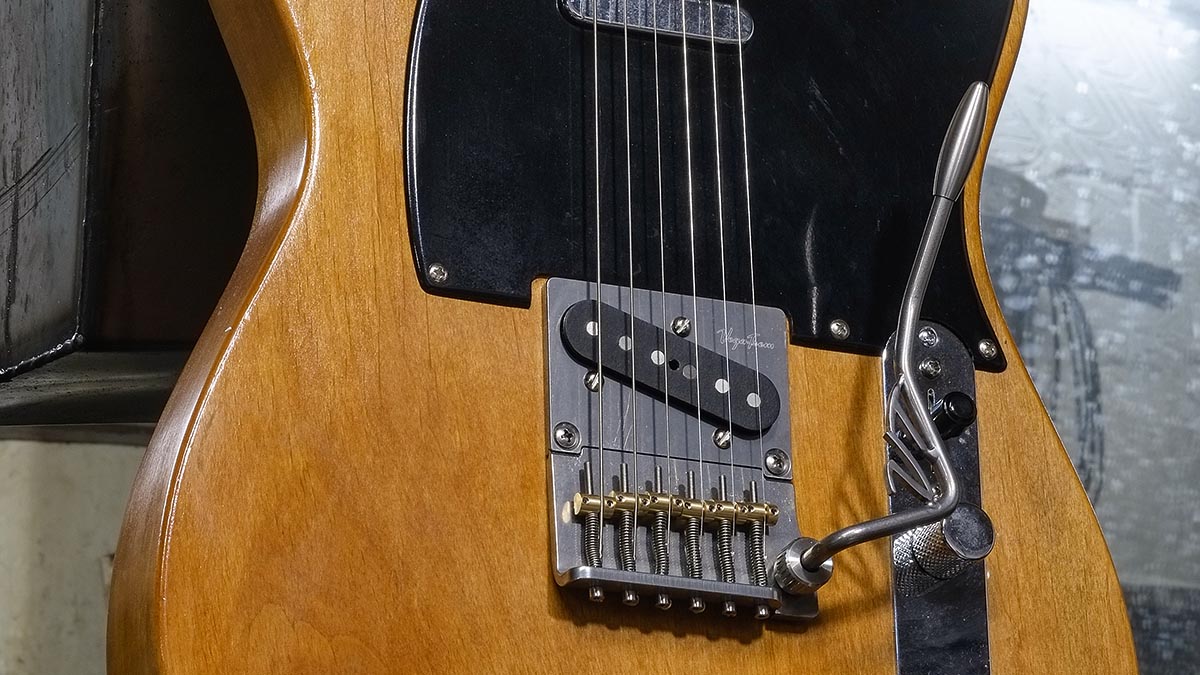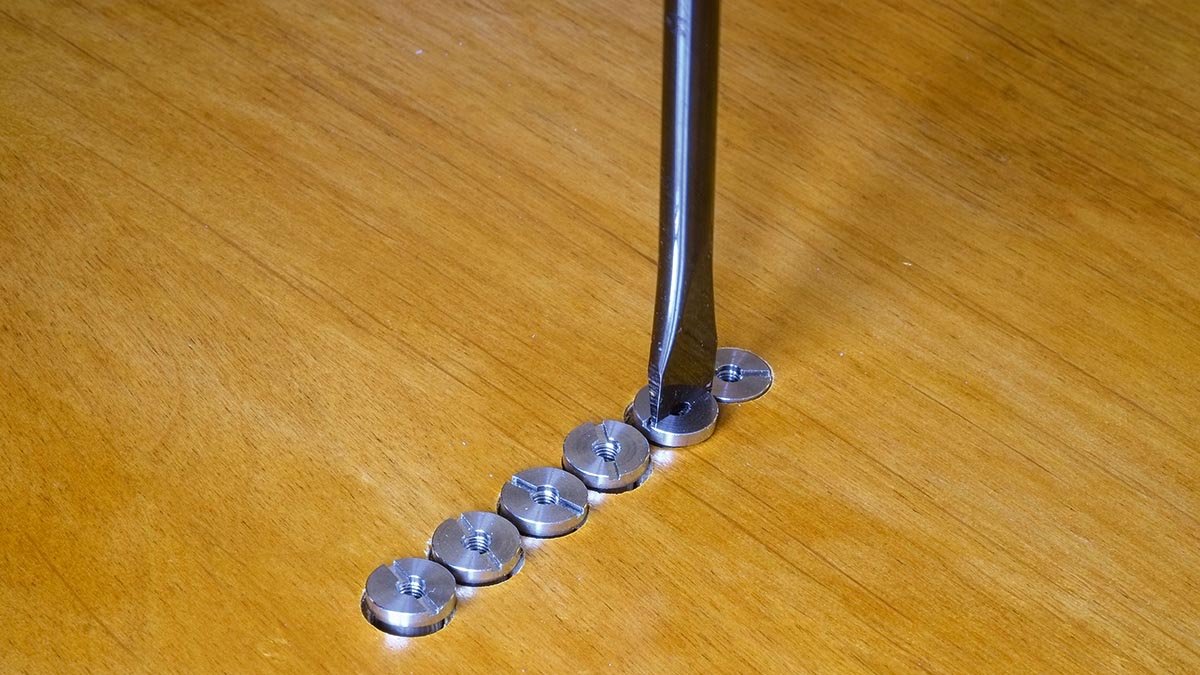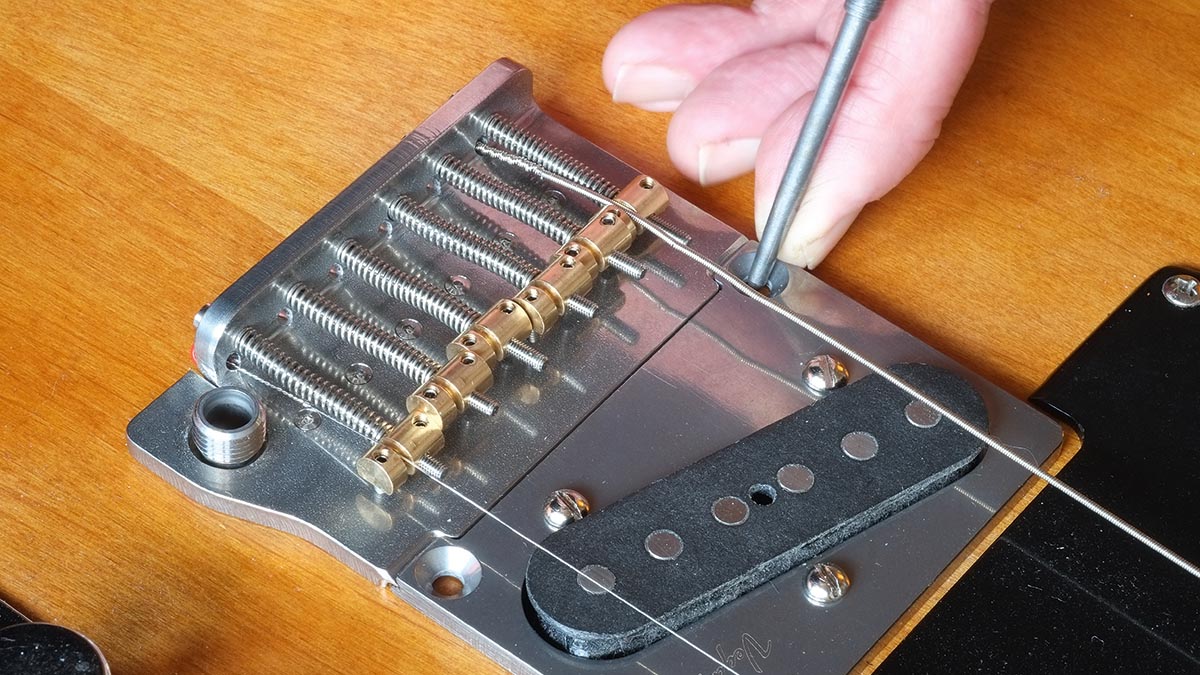
Part of the appeal of the Telecaster is its simplicity, particularly since it doesn’t have a vibrato, unlike the other Fender classics, the Stratocaster, Jazzmaster and Jaguar. Admittedly, that’s not the whole truth – but out of some 61 production Telecasters listed on Fender’s current website, only two have vibratos: the Vintera ’60s Telecaster Bigsby and the American Ultra Luxe Telecaster Floyd Rose HH – a classic vibrato and a modern dive‑bombing whammy.
There are some Tele-aimed vibratos available, such as the Super-Vee Maverick, but that is essentially a Strat-style vibrato and requires considerable routing of the body. The Stetsbar, meanwhile, is described as “a professional tremolo that stays in tune and does not require any additional holes or route” and is another option that certainly changes the look.
You can now add VegaTrem to that shortlist. You might have come across its VT1 UltraTrem for Strat-style guitars, which is a much more densely populated market for ‘improved’ vibratos.
But now the Mallorca-based company, founded by Isaac Vega, has launched the “tremolutionary” VegaTrem VT2: “We did it again,” the website announces, “a tremolo for T-Style guitars that does what seemed impossible… taking advantage of the existing spaces on Leo Fender’s iconic model to install a vibrato that achieves an action range superior to any other.”

The neat and (as far as we’re aware) unique feature of this new design is that it doesn’t require any such modification of your prized plank. The classic Tele bridge plate look is sort of retained, but it pivots midway.
There’s no inertia block like the Strat’s vibrato and the lower portion of the top plate is attached to six springs that (you guessed it!) go in the six string holes that pass through the body. You then top-load the strings at the back of the bridge and, hey presto! Can it really be that simple? And more to the point, will it actually work? VegaTrem graciously shipped us one to try.
What’s in the box?
Not that much, if we’re honest. You get the three components: the top half of the bridge plate, which also holds the bridge pickup; the bottom half with those almost laughable-looking small-diameter springs attached; and a pretty serious-looking arm with Floyd Rose-style screw-on collar (plus the two screws to mount it and a couple of Allen keys to dial in the saddle height and the intonation).
VegaTrem talks us through the hardware: “We took into serious account the materials we used for the system: a fulcrum and a 4mm [thick] plate made of marine stainless steel (316), and brass saddles. We manufacture in Europe with the same materials, quality, process and precision control used in the manufacturing of surgical materials.” The overall weight of the vibrato including that substantial arm is 0.336kg (0.74lb), quite a bit more than our outgoing standard stamped-steel bridge plate and saddles, which weigh 0.096kg (0.21lb).

There are actually two VT2 models, the Classic and the Modern. The former is for T-style guitars that use the ‘classic’ dimensions of 71mm between the string holes to the top screw of the bridge pickup, and the latter is for T-style guitars that use ‘modern’ dimensions where that same distance is 66mm.
As you can see, the saddles are brass, but there are six (not three) with a diameter of approximately 6.5mm with flattened bases. Each has quite a deep circular string groove that measures 0.046 inches wide – I’ve switched to imperial measurement because you’ll note this suggests 0.010 to 0.046‑gauge strings are the largest you can use without having to open the slot on the low E saddle. As to the saddle screw heights, we have two saddles with 5.94mm high screws and four with taller 7.75mm.
The donor guitar is a Wilkinson kit build that I put together back in 2021, a now rather well-used and well-played T-style with pretty vintage specification including a 184mm (7.25-inch) fingerboard radius. The first thing I did was put those VT2 saddles with the lower height screws in the outer string positions and approximated the saddle positions by measuring those on the host guitar.
Quick fit
As I said, the VT2 is designed to be a reversible modification so fitting the unit is pretty easy. I remove the strings then the bridge plate, and unscrew the bridge pickup, which I then tape over to keep it in place in the cavity.

Possibly the trickiest part is removing the string ferrules on the back of the guitar. Obviously, there have been various types of these since the early ’50s, but luckily ours came out easily – I just used a small screwdriver inserted into the string holes and lightly tapped the ferrules out using a small hammer.
The lower moving portion of the vibrato then just pushes into the string holes and you wind on the new ‘ferrules’, which are nicely machined slot-head bolts with an outer diameter of 9.45mm. These will hold things in place and presumably allow some tensioning of the six springs.
You now need to remount the bridge pickup to the second plate. I use a couple of lightly tensioned old strings to make sure everything is lined up, mark the holes and drill with a 2.5mm bit. A little dry lube on the two screws and we’re done.
Setup time

The strings now top-load from the back of the bridge, which means there’s a lot less tension over the saddles compared with the string-through-body style. As I’ve already prepared the saddles – I screwed in the height adjustment screws flush with the saddle tops and set approximate position – I luckily find that when I put on the new set of strings, things are not too far out of whack. That low string angle behind the saddles means it’s easy to set intonation without slackening the strings.
Normally, I ‘deck’ a vibrato – that’s what I like – but here the vibrato sits up a little. I try tightening the springs’ tension, but things feel very stiff so I settle on an approx. 2.5mm gap under the back of the vibrato, which should give a little up-bend.
As ever, use a spacer of the right thickness under the back of the vibrato, tune to pitch and make sure the spring tension is holding that shim in place. It is. Holding the guitar upright, just slightly loosen the spring tension – we have six springs here – until that shim drops out. It’s all pretty easy.
But does it work?

It does – but there are quite a few caveats. First off, if you want a vibrato with an ultra‑light Jeff Beck-like ‘fluttery’ feel, this is not for you. As set, even if you want just a little shimmer, then it feels pretty tight, but it does give that beautiful slight vibrato, just like touching a Bigsby or pushing/pulling the neck, which sounds great with some clean Fender amp tone and rich reverb.
With strings stretched it’s very in-tune, too, even if you manage a down‑bend. The arm has a VT logo welded to it – you can order an arm without that, which I think I’d prefer.

But there’s little doubt that the thick and relative weightiness of the 4mm stainless steel is playing its part – not dissimilar to the inertia block of a Strat’s vibrato – and it appears to give this Tele a more forward, ‘bigger’ sound with a long, smooth sustain, which is perhaps its trump card.
Its very boutique style is pretty cool, too – it almost comes across as a prototype that Paul Bigsby and Leo Fender might have hand-fashioned in a metal shop back in the day.
- PRICE: €265 (approximately $270)
- CONTACT: Vega-Trem







